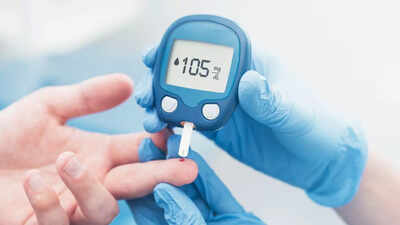High blood sugar levels in the morning? Know what the "dawn phenomenon" is and ways to lower your sugar levels | - Times of India

For individuals with diabetes, controlling blood sugar levels is a daily challenge. One common issue is waking up to higher-than-expected morning blood glucose levels, which can be both confusing and frustrating.
This phenomenon is often attributed to the "Dawn Phenomenon," a natural rise in blood glucose levels that occurs in the early morning hours. Accurate morning glucose measurement is essential for tailoring management strategies, including medication, diet, and lifestyle adjustments. By understanding your body's patterns and responses, you can develop strategies to tackle high blood sugar levels. This may involve adjusting your medication, diet, or exercise routine.
By taking a proactive approach to managing your diabetes, you can achieve optimal blood sugar control and improve your overall health.
Blood sugar, also known as blood glucose, is the amount of glucose (sugar) present in the blood. Glucose is a type of sugar that serves as the primary source of energy for the body's cells. Blood sugar levels naturally rise in the early morning hours due to the release of hormones like cortisol and growth hormone. This rise in blood sugar levels in the morning is called the “ Dawn phenomenon”.
The dawn phenomenon is a natural occurrence in people with diabetes, characterized by an increase in blood sugar (glucose) levels in early morning hours, typically between 4 am and 8 am. It is common in people with diabetes. Studies show that it affects over 50% of people with Type 1 diabetes or Type 2 diabetes.It is essential to manage and monitor blood sugar levels, especially in the morning. It helps guide personalised management plans, enabling adjustments to:
According to the American Diabetes Association, the main cause of high blood is decreased insulin activity.
Between 3 am and 8 am, the body releases hormones like cortisol and growth hormone, stimulating the liver to increase glucose production. This surge provides energy to help you wake up. However, in individuals with diabetes:- The pancreas may not produce enough insulin- Insulin resistance can occur, making it harder for glucose to enter cellsAs a result, blood sugar levels rise, leading to high morning blood sugar levels.
The primary indicator of dawn phenomenon is high blood sugar levels in the morning, often detected through Glucometer readings and Continuous glucose monitoring devices (CGM)The symptoms of the dawn phenomenon can occur if blood sugar levels are significantly elevated.Common symptoms that may include:
The most effective way to detect dawn phenomenon is through continuous glucose monitoring (CGM), which tracks glucose levels 24/7.
A CGM device measures glucose levels every few minutes and creates a graph showing blood sugar patterns over time. Without CGM, healthcare providers can still suspect the dawn phenomenon by analysing patterns of consistent glucometer readings. This provides a comprehensive picture of glucose fluctuations, helping to:
If left unmanaged, dawn phenomenon can lead to consistently high blood sugar levels, increasing the risk of diabetes complications, including:
Failing to address the dawn phenomenon can lead to prolonged periods of high blood sugar, ultimately affecting long-term health outcomes.
Some lifestyle changes and home remedies that may help lower morning blood sugar levels include:
If experiencing high blood glucose levels frequently (more than three times in 2 weeks), it's recommended to consult a doctor. Before trying any home remedies or making changes to medication, individuals with diabetes should consult their doctor for personalized advice.
The timing of these tests is crucial, as blood sugar levels can fluctuate after consuming carbohydrates.
To manage blood sugar spikes associated with the dawn phenomenon, there are a few ways that can be tried by the individual with diabetes.
If elevated morning blood sugar levels do persist, then it is necessary to speak with a doctor in order to receive individualised advice.Also read | 13 reasons why a 10-minute morning workout is beneficial for your health










